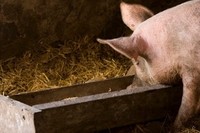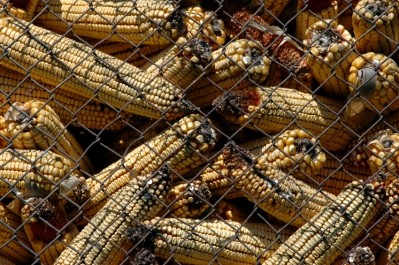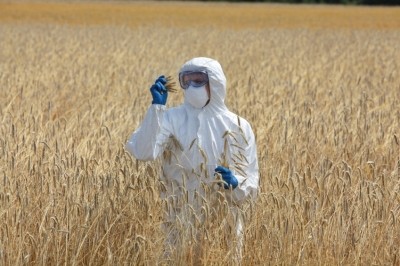Alltech warns about build-up of mold and mycotoxins in stored feed

Dr Max Hawkins, a nutritionist on the Alltech mycotoxin management team, told us that he and his colleagues are only now discovering the true effects of storage moisture and temperature, oxygen availability and forage management on mycotoxin levels in grains and silages.
He is presenting a webinar on the team's key findings today.
At harvest, said Hawkins, much of the 2013 crop in the US and in Europe was contaminated with multiple mycotoxins.
He said these crops have been stored over winter and spring and will be fed throughout the summer, exposing animals to a more complex challenge due to possible build-up of mold and mycotoxin growth in feed during storage.
“Mycotoxins molecules remain stable, they don’t simply go away. So if there were mold spores present in the crop at harvest time, they will remain in the stored grain.
But molds will lay dormant during storage and beyond unless there are stress factors to activate them such as heat, moisture or excess oxygen,” said the nutritionist.
Grain storage best practice
To avoid mycotoxin levels increasing during storage, Hawkins recommends that aeration fans are only run during the coolest times of day or night, and that grain should be held at 50 degrees F (10 degrees Celcius) or less and 14% moisture or less.
He also said that mold growth in storage is greater where there are leaks in facilities and where fines and damaged kernels are concentrated.
The south side and tops of grain bins warm quicker as daytime temperatures begin to increase, and new mold growth will increase temperature and moisture in surrounding grain, said Hawkins.
Regular feed sample analysis
He is calling on the feed sector to regularly run samples on feed throughout its production cycle from harvest to the feed mill stage to delivery to farm to mitigate initially the risk of livestock exposure to the contaminants.
“Livestock producers also need to take samples periodically from the feedstuffs being given to their animals to rule out whether the toxin load is too high at that stage and may be a factor in the ill health of the animal.
It is better to be proactive rather than reactive. Mycotoxin risk management programs are far less costly to operate than treatments for sick animals or loss of herd due to disease,” said Hawkins.
Undermining gut health
Mycotoxins have a direct impact on animal health, particularly the gastrointestinal health of the animal by ‘chopping down’ the villi in the intestine leading to lower nutrient absorption and less efficiency.
Indeed, a paper published in Poultry Science (2011, Vol. 90, pp.1934-40) indicated that mycotoxins reduced animal performance. Feed intake was 12% less, said the paper, while weight gain was reduced by 14%, and the final body weight was reduced by 14% in broilers.
Additional data from a trial with nursery pigs found that mycotoxins were associated with animals that weighed 100 grams less, and the net return per pig was $11.50 less.
Multiple mycotoxin load
Hawkins said a lot of research is focused on measuring the risk associated with exposure of an animal to one mycotoxin, but in reality, mycotoxins usually do not operate alone.
“Alltech’s global sampling program shows they are multiple mycotoxins occurring in feedstuffs, reinforcing the effects they have on animals,” said the nutritionist.
According to the nutritionist, this type of analysis more closely reflects commercial production and the challenges facing producers around the world.
He said it is critical to assesses and calculate the total potential risk to a given species associated with the mycotoxin group present in a sample.
In the US, a total of 104 corn silage samples and 279 TMR samples were analyzed through Alltech’s 37+ Program from September 2013 to March 2014 with each month showing an increase in the average number of mycotoxins per sample.
Corn silage samples, said Alltech, have shown increased in levels of Type B Trichothecenes from 681 parts per billion (ppb) in September to 1720 ppb in March.
A cautionary level of Type B Trichothecenes is 1000 ppb and high risk is 2000 ppb for mature dairy cows.
“As a result, dairy producers are likely to see decreased dry matter intake, lower milk production, poor gut health with inconsistent manure and diminished immune response,” said Hawkins











